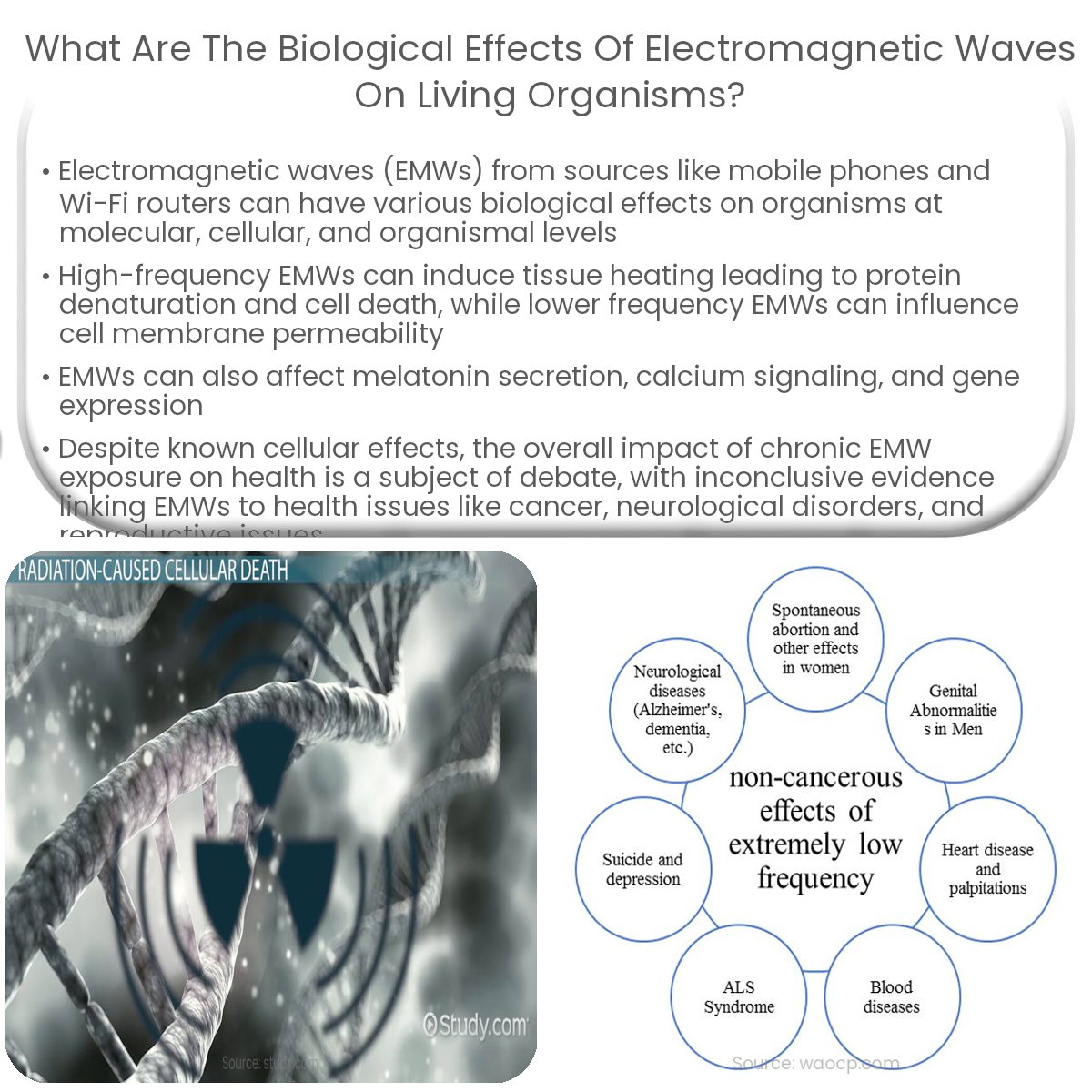EMWs can cause thermal and non-thermal cellular effects, generate free radicals, and impact melatonin secretion, calcium signaling, and gene expression.
Understanding the Biological Effects of Electromagnetic Waves on Living Organisms
Electromagnetic waves (EMWs) are ubiquitous in the modern world, emitted from sources such as mobile phones, Wi-Fi routers, and microwave ovens. While the convenience of these technologies is undeniable, concerns have been raised about the potential impact of EMWs on living organisms. This article explores the various biological effects of electromagnetic waves, from molecular to organismal levels.
Effects at the Cellular Level
- Thermal Effects: High-frequency EMWs, like microwaves, can induce tissue heating by vibrating molecules within cells. This can cause protein denaturation and cell death.
- Non-thermal Effects: Lower frequency EMWs, such as radiofrequency radiation, can influence cell membrane permeability, potentially disrupting cellular processes.
- Free Radical Generation: EMWs can induce the production of reactive oxygen species (ROS), which can cause oxidative stress, DNA damage, and apoptosis.
Effects on Biological Processes
- Melatonin Secretion: Exposure to artificial light, particularly blue light emitted by electronic screens, has been shown to suppress the production of melatonin, a hormone that regulates sleep-wake cycles.
- Calcium Signaling: EMWs can interfere with the movement of calcium ions within cells, which play a crucial role in numerous cellular processes, including cell division, neurotransmitter release, and muscle contraction.
- Gene Expression: Several studies have suggested that EMWs may alter gene expression, potentially impacting cell growth, differentiation, and apoptosis.
Effects on Organisms
Despite the known cellular effects, the overall impact of EMWs on living organisms remains a subject of debate. The scientific community is divided on whether chronic exposure to EMWs poses significant health risks to humans. Some studies have reported associations between EMW exposure and conditions such as:
- Cancer, particularly brain tumors and leukemia
- Neurological disorders, including Alzheimer’s disease and autism
- Reproductive health issues, such as reduced sperm count and motility
- Electromagnetic hypersensitivity, a controversial condition characterized by symptoms like headaches, fatigue, and sleep disturbances
However, many of these studies have limitations, such as small sample sizes, inconsistent methodologies, or lack of reproducibility. The World Health Organization (WHO) and other health authorities maintain that the current evidence does not conclusively prove that EMWs cause adverse health effects, but further research is needed to better understand the potential risks and to establish safe exposure limits.
In conclusion, while the biological effects of EMWs on living organisms are complex and not yet fully understood, it is essential to continue investigating the potential impacts on health and to develop guidelines for safe use of technology.


